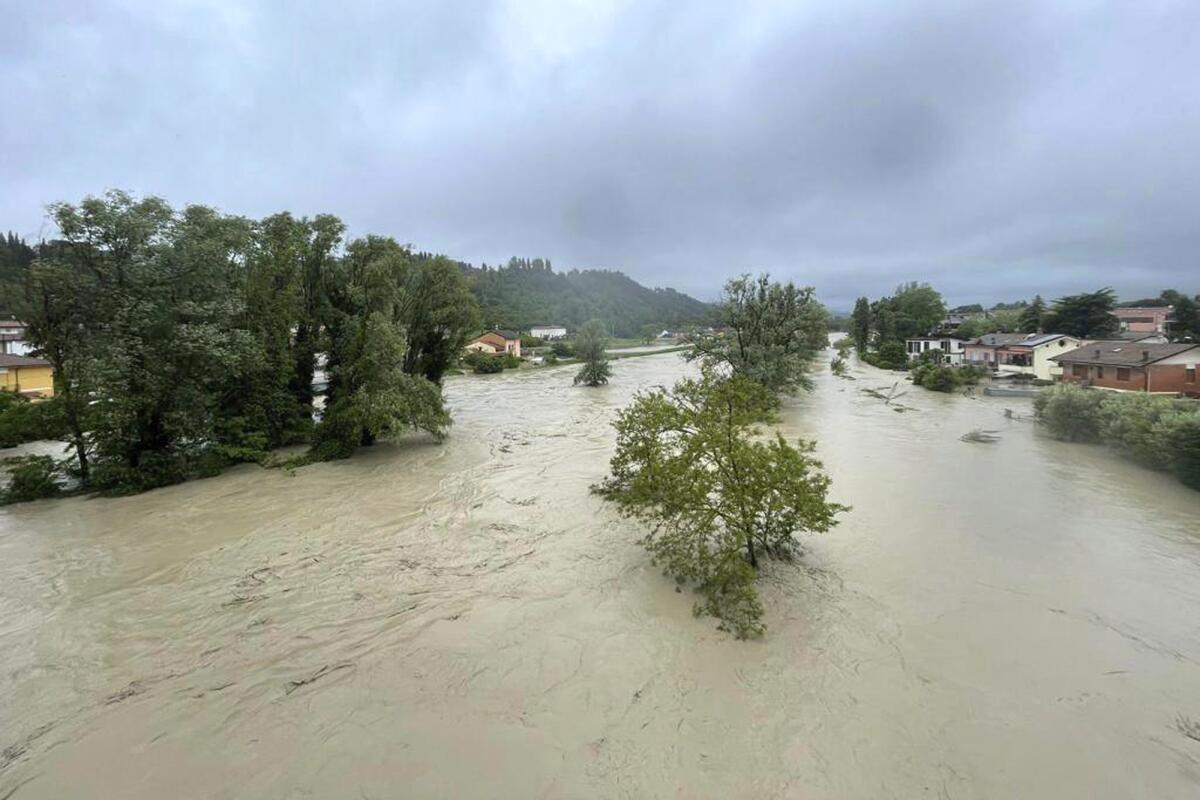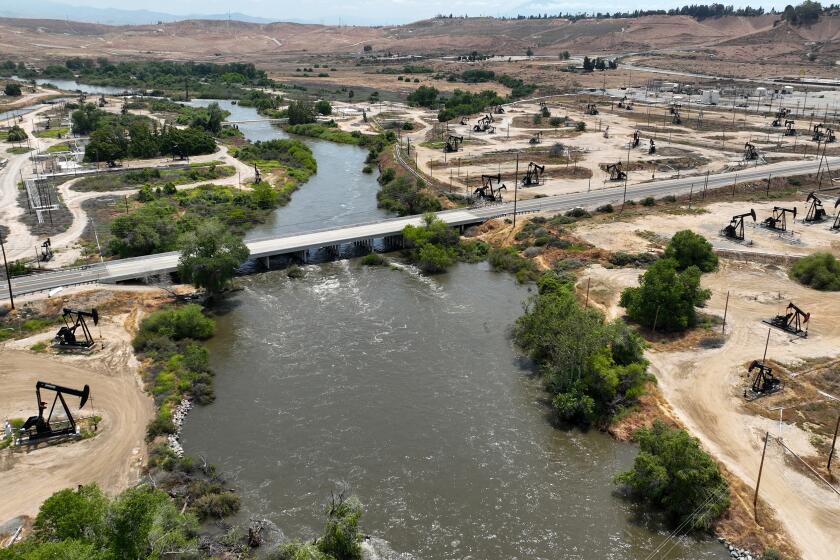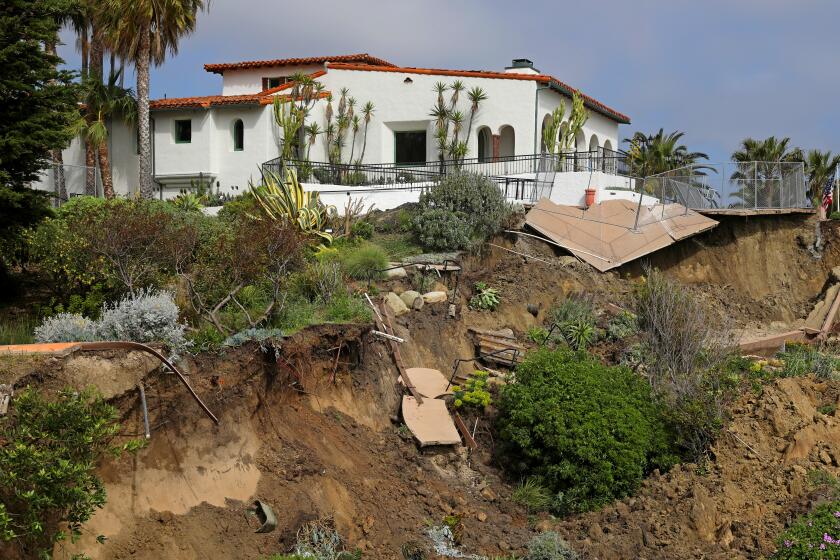Torrential rains in drought-stricken northern Italy kill 8, cancel Formula One race

ROME — Exceptional rains Wednesday in a drought-stricken region of northern Italy swelled rivers over their banks, killing at least eight people, forcing the evacuation of thousands and prompting officials to warn that Italy needs a national plan to combat climate-change-induced flooding.
The heavy rains also forced Formula One to cancel this weekend’s Emilia-Romagna Grand Prix, in order not to tax emergency crews already stretched thin in responding to the rivers of mud that have torn through the region, wreaking havoc on infrastructure and homes.
Days of rainstorms stretched across a broad swath of northern Italy and the Balkans, where “apocalyptic” floods, landslides and evacuations were also reported in Croatia, Bosnia and Slovenia.
The deputy governor of Emilia-Romagna, Irene Priolo, said eight people were killed and others unaccounted for in flooding that forced the evacuation of more than 10,000 people.
Among the dead was a farmer who defied floodwaters to try to save equipment on his property, officials said. His wife was among the missing.
Rescue helicopters plucked people from rooftops as floodwaters rose in their homes. In one rescue, a coast guard member pulled a woman out through a skylight and held her tight as the two were winched to a hovering helicopter and pulled inside.
“Even upper floors aren’t safe anymore,’’ Gian Luca Zattini, mayor of Forli, one of the hardest-hit towns, told Sky TG24 TV.
In areas where pumpjacks bob along the banks of the Kern River, Chevron has been shutting down oil wells, pipelines and electrical power.
Italian Civil Protection Minister Nello Musumeci called for a new nationwide hydraulic engineering plan to adapt to the impact of the increasing incidence of floods and landslides. At a briefing, he noted that an average of about 8 inches of rain had fallen in 36 hours in the region, with some areas registering nearly 20 inches in that period.
“If you consider that this region averages 1,000 millimeters [about 40 inches] of rain in a year, you realize the impact that these rains have had in these hours,” Musumeci said.
Citing the November landslide in Ischia, which killed a dozen people, he said Italy is increasingly experiencing Africa-style tropical weather, with long periods of drought punctuated by intense rainfall that can’t be absorbed by the soil.
“Nothing will ever be the same again ... and what has happened in these hours is evidence of that,” Musumeci said. “When soil remains dry for a long time, instead of increasing its absorption capacity, it ends up cementing and allowing rainfall to continue flowing over the surface and causing absolutely unimaginable damage.”
Compounding Italy’s vulnerability to climate-change-induced flooding are already-fragile hydrological conditions in much of the country. Italy also must grapple with the decades-old practice of people building in areas prone to mudslides or floods — homes that are often allowed to stay in place thanks to occasional government amnesties.
A landslide beneath the historic Casa Romantica in San Clemente underscores the threat of coastal instability exacerbated by last winter’s powerful storms.
The mayor of the city of Cesena, Enzo Lattuca, posted a video early Wednesday on Facebook to warn that continued downpours in the Emilia-Romagna region could flood the Savio river and smaller tributaries for a second day. He urged residents to move to upper floors of their homes and avoid low-lying areas and riverbanks. He announced the closure to traffic of some bridges and streets after rivers of mud sloshed into basements and storefronts.
At least 50,000 people were without electricity, and more than 100,000 were without cellphone or landline use, Musumeci said.
Many residents evacuating their homes put vital belongings in the rubber boats they’d normally tow each summer to the region’s flourishing beach resorts on the Adriatic Sea and pulled them through deluged streets.
The deputy chief of the Civil Protection agency, Titti Postiglione, said that rescue operations for those needing emergency evacuations were particularly difficult, given that so many roads and routes were flooded and phone service interrupted.
Some regional train routes remained suspended Wednesday around Bologna and Ravenna, with severe delays elsewhere, the Italian state railway said.
Toward a more sustainable California
Get Boiling Point, our newsletter exploring climate change, energy and the environment, and become part of the conversation — and the solution.
You may occasionally receive promotional content from the Los Angeles Times.
Prime Minister Giorgia Meloni, who was traveling to the Group of 7 summit in Japan, said the government was monitoring the situation and was prepared to approve emergency aid.
In the Balkans, the swollen Una river flooded parts of northern Croatia and northwestern Bosnia, where authorities announced a state of emergency. The mayor of the town of Bosanska Krupa in Bosnia said that hundreds of homes had been flooded.
“We have an apocalypse,” Amin Halitovic told regional N1 network. “We can no longer count the flooded buildings. It’s never been like this.”
Dozens of landslides were reported in eastern Slovenia, many of which endangered homes and infrastructure.
In Croatia, hundreds of soldiers and rescue teams continued bringing food and other necessities to people in flood-stricken areas who have been isolated in their homes. No casualties have been reported so far.
More to Read
Sign up for Essential California
The most important California stories and recommendations in your inbox every morning.
You may occasionally receive promotional content from the Los Angeles Times.












